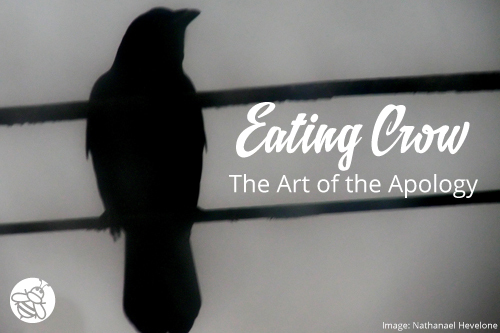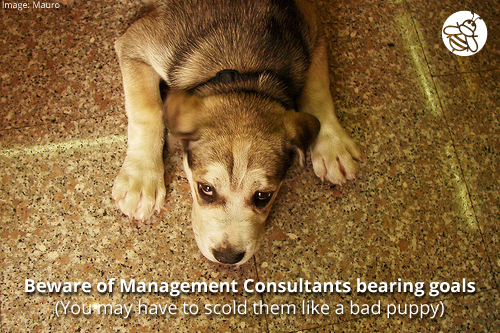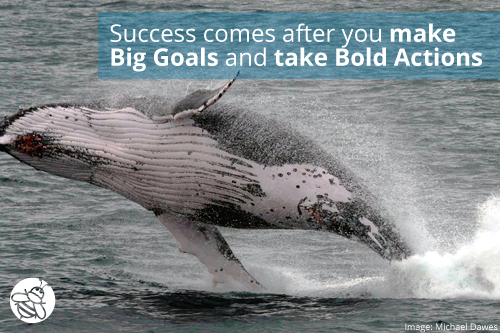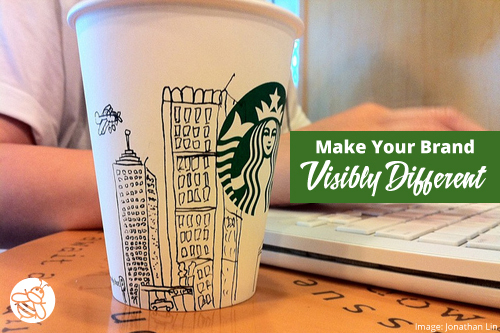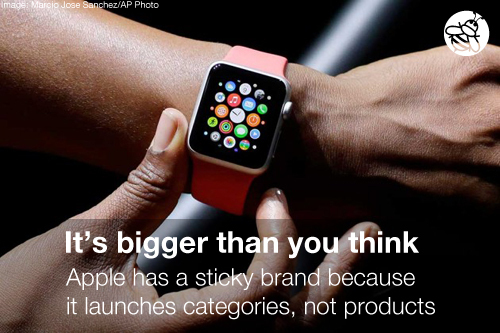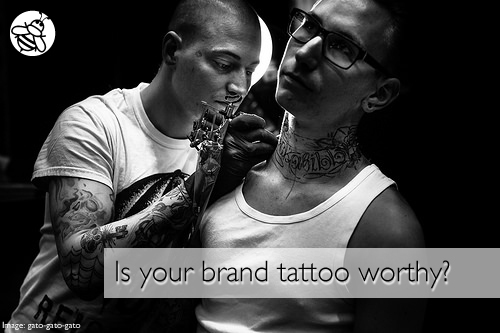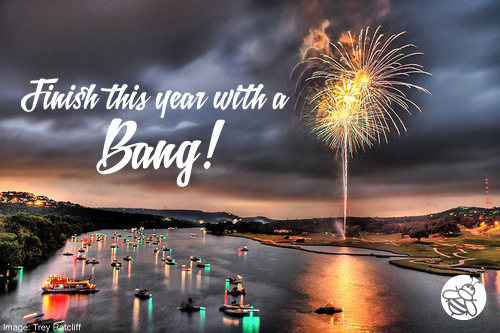Jeremy Miller's Blog, page 43
September 25, 2014
Eating Crow: The Art of the Apology
No one likes to be criticized. It’s hard to hear you have done something wrong, or you have inadvertently offended someone. But it happens.
This week I faced a direct criticism. My article, Beware of Management Consultants Bearing Goals, made a broad generalization of management consultants. And I got called out for it, “What about marketing specialists and consultants promising silver bullets? Sorry Jeremy, but I think this post is in poor taste.”
When I first read the email criticizing the article I got defensive. I wanted to argue my point further. I wanted to explain where I was coming from. I wanted to prove I wasn’t wrong.
But that would have been the wrong approach. All I could do was apologize and acknowledge my mistake.
Don’t get defensive when you have offended
It may hurt to hear you’ve made a mistake, but don’t get defensive.
Let me illustrate this with another example. Last week I visited a local coffee shop in a high-end shopping area. I went in with high expectations, but the experience was terrible.
That evening I wrote a scathing review and criticized the establishment.
The owner responded to me, “Jeremy, thank you for your candid commentary. I disagree with everything you said except for the mice you saw.”
By opening with a defensive statement it made me defensive. I may have been inclined to give them a second chance if I was offered an authentic apology, but the owner’s need to defend his position strengthened my disappointment with the establishment.
Eat your crow
When you screw up, eat crow.
Suck back your pride. Burry any defensive reactions. Apologize. Simply, graciously apologize. Acknowledge the mistake, and learn from it.
Think about it this way. For someone to take the time to criticize you is a gift. They are sharing an opinion so you can get better. Take the criticism and use it ��� examine your behaviors and find ways to improve your services.
In my case, my article made a broad, sweeping generalization. Not all management consultants are bad. To the contrary, most are excellent and they truly care about the services they deliver.
I made a mistake. I am sorry to those I offended. I have taken the feedback to heart.
How do you respond when your services are criticized?
September 23, 2014
Beware of Management Consultants Bearing Goals
Companies can get led astray with weak goal setting. A misaligned goal can��derail your firm’s entire planning process.
Picture this situation:
A��management consultant leads an��executive team through a strategic��planning process. It was a busy morning. The team conducted a SWAT analysis and achieved clarity on the company’s competitive advantages.
During the afternoon session, the consultant poses a question to the group, “Where do you see your business in 5 years? What’s your goal?”
The team ponders the question and suggests, “We want to double our revenue to $24 million.” The consultant counters, “That’s not big enough. Think bigger! What’s your BHAG ��� Big Hairy Audacious Goal?”
The team gives it some more thought and replies, “How about $50 million?” The consultant pounces, “That’s it. Now you’re cooking with gas. That’s a BHAG! And I’ve got the perfect name for your goal, ’50 in 5.'”
The team rallies around the idea. “50 in 5″ has a nice ring to it. It is��clear, specific, and motivating. And it is��big. To achieve the goal the company will��have to grow by more than 400% in 5 years.
Big Goals rarely rhyme
Be wary of any goal that sounds like:
25 in 5 ($25 million in 5 years)
30 in 3 ($30 million in 3 years)
50 in 5 ($50 million in 5 years)
Paring nice even numbers may sound appealing, but they are rarely achievable.
The number is a starting point
“50 in 5″ is a good starting point for your goal, but it’s not a goal. It’s a milestone. Where is the rest of the goal?
Make your goals SMART ��� specific, measurable, achievable, relevant, and time-bound. “50 in 5″ covers the M and the T, but it doesn’t encapsulate the S, A, or R.
What areas of your business are you working on? Why is the goal important for not only your business, but for your customers? Is the milestone achievable?
When you consider the richness of a goal you can find much better names that describe the essence of the Big Goal and its importance.
Revenue plateaus are filled with unforeseen problems
Growing a company to $25-, $30- or $50-million is an admirable goal, but the number is fraught with risks.
Companies grow through predictable revenue plateaus: $1 million, $5 million, $10 million, $25 million, $100 million, $500 million, $1 billion. At each level, growth can slow down or stall.
To break free of these plateaus involves a major shift for the business. It requires investing in the infrastructure of the next level (business processes, talent, systems, operations, sales, marketing, etc.).
It often feels like you are throwing the baby out with the bathwater as you push through each plateau.
“30 in 3″ or “50 in 5″ do not��prepare your team for what’s ahead. It’s just a number. To cross a revenue plateau requires a fundamental shift in your business and your behaviors.
The number loses impact
The number is only motivating when your company is on track. If you are growing quickly and on pace to achieve “50 in 5,” it’s a motivating goal.
As soon as you hit a bump in the road the phrase can haunt you.
If you fall behind, the number becomes even more daunting.
If changes to cross a revenue plateau are too painful or expensive, the team can rebel.
If you fail to meet the milestone, you can lose credibility.
I’ll repeat it. “25 in 5,” “30 in 3″, “50 in 5″ are effective milestones. They are numbers to shoot for, but they are not goals. Don’t let the number hold your company back.
Scold bad management consultants
I’d like to say it’s an anomaly for a company to have a goal like “50 in 5,” but they are surprisingly common. Management consultants seem to love them.
If you find yourself in a planning meeting and a��consultant proposes a goal like “50 in 5,” scold him like a bad puppy. Look him in the eye and deliberately say “no” three times. Really emphasize the “no.” Let him know he’s made a mistake.
It’s your duty to prevent your company from making shallow commitments and unachievable goals.
September 18, 2014
Success Comes After Big Goals and Bold Actions
It’s easy to look at successful, high growth companies and think, “I want that.”
But what’s missed in examining a company’s current success is the steps they took to create the conditions for growth.
Success is a result
Success comes after you make Big Goals and take Bold Actions.
National Logistics Services (NLS), for example, is the go-to logistics provider for fashion and footwear companies. The company is growing in excess of 30% year-over-year, and every month has been profitable since June 2010. In fact, they hired over 100 employees in the first quarter of this year alone ��� growing their team to 450 people.
But to achieve this level of growth started with a choice.
Prior to 2008 NLS were generalists. Peter Reaume, CEO of NLS explains, “We were doing a bit of everything: entertainment, healthcare, food, and pharmaceuticals. We were growing, but we had no brand. It wasn’t sustainable. We were not experts in anything.”
To tilt the odds in their favor they made a choice: grow a brand.
Big Goals take sacrifice
NLS made deep, painful sacrifices to grow a brand.
To create the conditions for growth they repositioned the company from being generalists to experts in the fashion and footwear category. And it cost them.
Many companies experience a terrifying lull after they commit to a niche ��� what I call sales purgatory. NLS went eighteen months with virtually no new sales, and they did it��with over 250 employees!
It was a painful and scary transition, but they knew they had to commit to their Big Goals if they wanted to grow a brand.
No Guts, No Glory
Creating a high growth company is not accidental. It takes guts to commit to such big, audacious goals. It takes guts to stick to your goals when your company is suffering and making deep sacrifices. It takes guts when everyone else in your industry isn’t following the same path.
But the few companies with the guts to commit to Big Goals and take Bold Actions have an opportunity to outperform their peers.
Success is a result. Do you have the guts to commit to your Big Goals and take Bold Actions?
September 16, 2014
Make Your Brand Visibly Different
It’s one thing to commit to growing an incredible brand, but if your customers can’t see it they won’t believe it.
Sticky brands are visual brands. You can see the difference.
Every incredible brand has a strong visual quality. Sticky brands pay a lot of attention to their visual identity, and create optically engaging experiences for their customers.
We respond to physical attraction
In the late seventies Dr. Shelly Chaiken, a researcher and expert in persuasion, ran a fascinating experiment. She recruited a group of students at the University of Massachusetts to persuade their fellow students to petition the university to ban the sale of meat products on campus.
As you can imagine, banning the sale of meat in the seventies was a pretty audacious request. Vegetarianism was not widely accepted, or even acknowledged, at the time.
What’s fascinating about the study is not the request, but the approach. The students recruited into the study were divided into two groups: presenters of high physical appeal, and presenters of low physical appeal. The hots, and the not-so-hots.
Dr. Chaiken proved humans are influenced by attractive people. The students who received the message from an attractive presenter were more inclined to agree that meat shouldn’t be sold on campus than the students who heard it from the unattractive presenter.
We judge with our eyes
Sight is the most important human sense for evaluating brands and making purchase decisions.
We are bombarded with visual stimuli.
In our technology driven society we rely on our sense of sight above all our other senses. Our sense of taste, touch, and smell do not play a major role in most of our purchases, because we cannot rely on those senses.
As a result, we naturally gravitate towards companies that deliver a better visual experience.
Make your brand visually better
The importance of creating an attractive brand has never been more important.
We are glued to our smartphones, tablets, and computers. We find information on Google, and get directed to websites. In ten seconds or less you will make a snap judgment on a website based on its visual appeal.
Look at every touchpoint your customers can engage with your business and brand, and assess your brand’s visual appeal. Are you engaging your customers’ eyes? Is your brand hot?
September 11, 2014
Apple Pay and Apple Watch Are Bigger Than You Think
The Apple hype machine rolled into hyperdrive on Tuesday. It was a spectacle that did not disappoint. Not only did Apple release two new iPhones, they launched two new categories.
Apple Pay and Apple Watch (or the iWatch) demonstrate why Apple has one of the most recognized and sticky brands in the world.
Apple didn’t just launch two new products alongside the new iPhones. They redefined two new categories!
Apple doesn’t invent products
Apple did not invent the wearables category. Nor did they create the mobile payment category. As Android users are quick to point out, Google has offered those products for a while now.
From a product perspective, Apple is late to the party. But from a category perspective, it just got interesting.
According to David Aaker, Apple is the only company to create five new categories or subcategories in less than a decade ��� the iMac, iPod, iTunes, iPhone, and the iPad.
We look at these devices as commonplace now, but their impact on the consumer electronics industry and their respective categories is nothing short of revolutionary.
Apple Pay and Apple Watch have a similar opportunity. These two products will redefine their categories, and set the standard for the rest of the industry to follow.
A total solution
When Apple redefines a category it makes everything that came before them obsolete.
Mobile payments via a NFC-enabled device have been around for a long time. Blackberry had NFC on its devices in 2011, and Samsung included it on the Galaxy S devices in 2012.
The problem was the mobile payment category was immature. The industry was fixated on point solutions, and no one had pulled the entire ecosystem together. So it didn’t matter if you had a NFC-enabled device. You couldn’t use your phone to make payments, because the infrastructure was missing.
Apple Pay is redefining the mobile payment category by launching a total solution: partnerships with credit card companies and major retailers, complete software system with security and privacy as key features, and a well defined business model.
Apple Pay will succeed where others have failed, because it has a complete solution that builds off the existing behaviors of consumers and merchants.
What’s interesting is yet to come
The launch of Apple Pay and Apple Watch are just the first step. The real excitement will unfold over the next three years.
The playing field has been set, and the rules are defined. Now we will see advancements in product innovation. Device makers will rethink their wearable devices, and payment platforms will evolve based on Apple Pay.
Apple has a head start, but the other guys will be quick to respond. It will be exciting to see where this goes.
What do you think?
September 9, 2014
My Ultimate Bucket List: From Brilliant to Blunder
Malaysia Airlines made international headlines last week with what can only be described as one of the dumbest advertising campaigns.
They asked the public, “What destinations are on your bucket list?” The “My Ultimate Bucket List Campaign” offered prizes, including flights on the airline, for the best suggestions.
I laughed out loud when I heard about this campaign. I couldn’t believe it. What were they thinking? The absurdity of the campaign was unbelievable.
But after a little research my attitude shifted. I felt sorry for the airline. It turns out this was an extremely successful campaign before the two horrific incidents involving the airline: the loss of Flight 370 followed by Flight 17 being shot down over Ukraine.
Effective marketing reflects the times
I really can’t hold up “My Ultimate Bucket List” as the world’s worst marketing campaign. It’s not.
Until this year, Malaysia Airlines had an excellent reputation. It was the airline that took you to exotic locations. It’s the gateway between Europe, Australia, New Zealand, and much of Asia.
The bucket list concept was a brilliant campaign before Flight 370. Malaysia Airlines was likely your first choice if you wanted to travel to places like Hanoi, Istanbul, Darwin, Yangon, or Kuala Lumpur.
But “bucket list” took on a whole new meaning after so many people lost their lives this year.
Momentum can cloud your judgement
Malaysia Airlines is caught between a rock and a hard place. Neither of the incidents were their fault, but travelers are naturally leery of flying on the airline. I cannot imagine the pressures this is placing on the company as they try to rebuild their business and their brand.
“My Ultimate Bucket List” had been successful. It engaged their customers’ hearts and minds, and helped establish the airline’s brand promise. It’s not surprising they would reinvest in the campaign when things are looking so bleak.
They weren’t asking travelers to consider their own mortality. They were asking people to consider the possibilities the world has to offer. Unfortunately the public didn’t respond as they expected. As soon as the campaign launched, Malaysia Airlines was��criticized for being insensitive.
What made them successful in the past clouded their judgement. It may have sounded like a good idea to relaunch the campaign in��management meetings, but as soon as the campaign was announced the backlash was swift and forceful. Malaysia Airlines immediately recognized their mistake, apologized, and pulled the campaign.
Speak to the times
The most persuasive and powerful messages speak to the moment.
Consider the dialogue every time you refresh your brand, your core messaging, or launch a campaign. What’s happening right now? What are people talking about? What are their hopes, fears, beliefs, and attitudes?
And most importantly, how can you engage them in a direct conversation?
It’s easy to lose sight of the issues when you are discussing marketing concepts internally. To avoid a crisis assign a member (or members) of your team to be the voice of your customers. Task them to rally and fight for the customers’ beliefs and needs.
It’s a matter of context. The dialogue can change in a heartbeat, and you can find yourself on the wrong side of the conversation if you’re not paying attention.
September 4, 2014
Grow A Tattoo Worthy Brand
One of the strangest phenomena in branding is seeing consumers get tattoos of their favorite logos. People love Apple, Harley Davidson, Nike, and Gucci so much they’re willing to permanently ink the brand on their body.
Would you get a tattoo of a company logo? I know I wouldn’t. I find the idea simply ridiculous.
But from a branding context, wow! You have to grow a pretty remarkable brand to make it tattoo worthy. The brand has to stand for something, and achieve a deep, personal connection with your customers.
Create a human connection
A tattoo worthy brand may be the pinnacle of consumerism, but there’s a deeper idea here.
Companies achieve a powerful competitive advantage when they connect with their customers at a personal and human level. The relationship shifts the brand from��“just another service provider” to the “first choice.”
It’s the human connection that makes the brand so sticky.
There’s always a cheaper alternative, but we naturally gravitate towards products, services, and companies that we identify with at a human level.
The brand is a symbol
You don’t have to have a stunning logo to make your brand tattoo worthy.
The logo doesn’t make a brand tattoo worthy. The logo is just a symbol. But that symbol is packed with meaning.
Tattoo worthy brands are very purposeful in distilling their values and beliefs, and baking them into the fabric of their company. A BMW is more than a car, it’s a symbol. And so too is a Harley Davidson, a Macbook, or Toms Shoes.
These brands connect with people, because they stand for something.
Connect with a Point of Sharing
Tattoo worthy brands are not all luxury brands. You don’t have to be a status symbol to foster a deep connection with your customers.
We connect with companies when there’s a Point of Sharing. This could be a shared value, shared experience, or a shared interest. The Point of Sharing is the connective glue that links a brand with��a consumer. It’s what they have in common.
What does your company believe deeply? What are you passionate about? Do your customers share in your values and beliefs?
To grow a tattoo worthy brand you are looking for a bond between what you believe and what your customers believe. When your brand stands for something that your customers identify with it will elevate it and make it remarkable.
September 2, 2014
Is Your Call To Action Too Late?
The buying cycle is not as predictable as many experts would like us to think. B2B buyers don’t suddenly have a need, Google for options, review websites, reach out to a sales person, evaluate, and buy.
It’d be nice if that’s what our customers did, but that’s not the reality of the situation.
According to Forrester Research, a B2B customer can be 90% of the way through the buying cycle before they even engage a sales person. Ninety percent!
A “call to action” too late
B2B websites usually have one or two calls to action:
Contact us
Request a demo
Some firms may have a call to action to download a whitepaper or slidedoc (downloadable presentation).
But these engagement steps are only relevant to customers who are deep into the buying process. “Contact us” only makes sense when the buyer knows what they want, and they’re looking for solutions.
Engage early and often
Think sooner. Only 3% of a B2B marketplace is buying at any given time. The rest are not. They may be satisfied. They may have other priorities. They may be planning for the next fiscal.
The challenge is to engage these buyers when they’re not shopping.
How can you engage your customers when they are just starting their journey? What are they looking for when they become aware of a need? What do they look for? Where do they go for ideas and information?
How can you engage them upwards of three years before they are ready to buy?
Feed the content beast
Your customers will get the information they need, whether you help them or not.
Lori Wizdo at Forrester writes, “A B2B buyer will find three pieces of content about a vendor for every one piece that marketing can publish or sales can deliver. They are finding this content in an ever-expanding number and variety of channels.”
This poses a real marketing problem. The companies with the most content are tilting the odds in their favor.
The more you can interact and support your customers through the entire buying cycle, the more likely they will choose you first when they are ready to buy.
Create a first choice advantage
Are you investing enough in content, tools, and programs? Do you engage your customers when they are in the Awareness and Consideration phases of the buying journey?
Engage your customers long before they have a need for your services, and create a first choice advantage for your brand.
August 28, 2014
Blow The Doors Off 2014
I can’t believe it’s the end of summer already. Kids go back to school next week, and it’s time for businesses to sprint for the finish line.
There’s only 4 months left of this year. What are you going to do to close 2014 on a high note?
Looking back
We are two-thirds of the way through 2014. Take a moment to reflect on what you have accomplished so far this year:
What are you proud of?
What were your successes?
How far have you progressed since January 1st?
Take stock of all the good things that have happened so far this year. It’s easy to get caught up in your crushing task list, and lose sight of your accomplishments.
Pressing forward
You have accomplished a lot, but there is still so much you can do.
You’ve got 4 months left:
How will you know 2014 was a success?
What are your key milestones?
What do you want to accomplish before year end?
There’s not much time left in this year. The last 4 months race by shockingly fast. What do you have to accomplish to say this year was the best it could be?
Build your brand with a plan
Take this concept beyond a personal development task.
September is an ideal time to review your brand strategy, take stock of your positioning, and define your plan to grow your brand even further.
Use this transition from summer to fall as your opportunity to accelerate your business and your brand.

